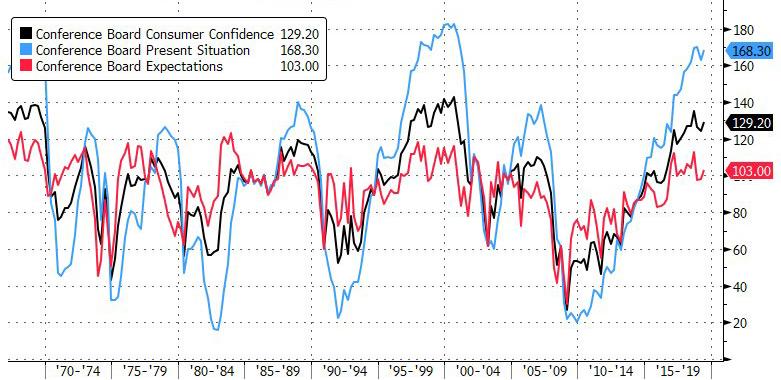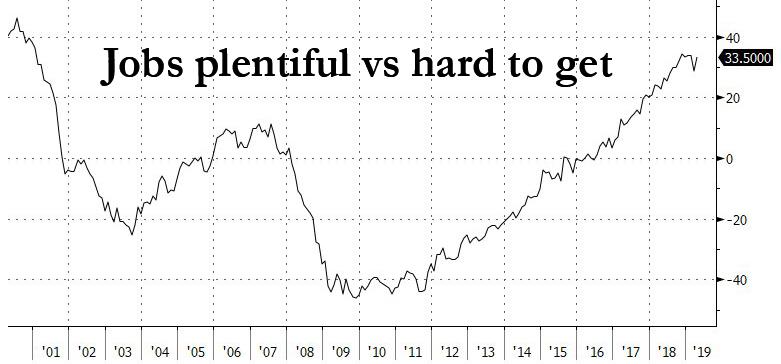Following several disappointing economic reports, including a continued slump in nationwide home prices and a crash in the Chicago PMI, we got a modest sliver of good news when the Conference Board reported that April Consumer Confidence rebounded from 124.2 to 129.2, a sharp beat to the 126.8 expected.
Both estimates of current conditions and economic outlooks improved: the Present Situation Index – based on consumers’ assessment of current business and labor market conditions – increased, from 163.0 to 168.3. The Expectations Index – based on consumers’ short-term outlook for income, business and labor market conditions – increased from 98.3 last month to 103.0 this month.
Consumers’ assessment of current conditions improved in April. Those stating business conditions are “good” increased from 34.7 percent to 37.3 percent, while those saying business conditions are “bad” decreased from 12.4 percent to 11.7 percent.
Consumers’ short-term outlook also improved in April. The percentage of consumers expecting business conditions will be better six months from now increased from 17.2 percent to 19.9 percent, while those expecting business conditions will worsen declined from 10.0 percent to 9.1 percent.
Commenting on the report, Lynn Franco, Senior Director of Economic Indicators at The Conference Board said that “Consumer Confidence partially rebounded in April, following March’s decline, but still remains below levels seen last Fall.” Franco noted that “the Present Situation Index, which had decreased sharply last month, improved in April, as did consumers’ short-term outlook. Overall, consumers expect the economy to continue growing at a solid pace into the summer months. These strong confidence levels should continue to support consumer spending in the near-term.”
And with the payrolls report due out in just three days, many were keeping an eye on the reports’ measure of consumer sentimenta bout the labor market as indicated by the “jobs plentiful vs hard to get” indexes: here the respondents’ assessment of the labor market was also far more upbeat, with those stating jobs are “plentiful” increased from 42.5%to 46.8%, while those claiming jobs are “hard to get” decreased from 13.8% to 13.3%. As a result, the difference between the two series rose to 33.5, just shy of the highest print this cycle, and approaching levels last seen just before the dot com bubble burst.
via ZeroHedge News http://bit.ly/2GXeygN Tyler Durden

